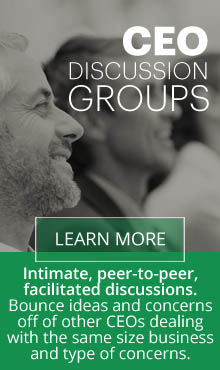 One of my elementary teachers that I most remember is Mr. Stevens He was a good teacher and I learned a lot in his music class. But what I most remember about Mr. Stevens is that he walked around with a ruler. When anyone wasn’t paying attention or misbehaved, he would snap that ruler on the top of your shoulder and it would really sting.
One of my elementary teachers that I most remember is Mr. Stevens He was a good teacher and I learned a lot in his music class. But what I most remember about Mr. Stevens is that he walked around with a ruler. When anyone wasn’t paying attention or misbehaved, he would snap that ruler on the top of your shoulder and it would really sting.
These days this would never be allowed but, “back in the day,” the ruler landed on my shoulder once or twice (completely undeserved, of course). The mere threat of “the ruler” was sufficient to keep most of us in line. A vivid memory to me, this is an example of motivation by fear where, essentially, Mr. Stevens used the threat of pain and embarrassment to keep us 5th graders in line. And, for the most part, it worked.
Then there was dear, sweet Mrs. Bell who was forever cajoling her students with sweets and extended play periods if we would merely complete our homework assignments and behave in class. Her approach also resulted, like Mr. Stevens, in a fairly well-behaved classroom, much because the rewards were sufficient to alter the actions of some who would have otherwise misbehaved or not minded. Mrs. Bell’s methods are a simple example of motivation by incentive.
Traditional Types of Motivation
Both of these types of motivation (by fear and by incentive) are based on external factors (pain and sweets in my examples) to get a desired result. These two types of motivation are also found extensively in the workplace, where verbal abuse, threats of firing, and exhortations of “do better or else” occur daily. Similarly, it is common practice that bonuses, award trips, and other forms of compensation are used to motivate employees. The issue is that, since these forms of motivation are based on external factors, the modified behavior (to avoid the negative repercussion or to achieve the benefit) is often short-lived.
The very essence of fear is negative, and any results produced under the stress of fear is typically second-rate at best. Many of the same kids who behaved well enough in Mr. Steven’s class, misbehaved in other classes. Their change in behavior was situational and not long-lasting. Likewise, many students in Mrs. Bell’s class acted well enough to get the rewards that were being offered, but behaved less appropriately when there were no special incentives. Again, parallels can easily be drawn with situations at work where employees change their behaviors depending on which of these two traditional types of motivation is utilized. Fear and incentive motivation can be used temporarily but for less than lasting results, so they can work well even if they working from home, since a llots of staff now work from home but did you know that you can easily monitor employees working from home so that you can keep track of what they are doing, so you make sure they are effective and motivated.
The Power of Attitude Motivation
As the modern workforce changes and evolves, incentive and fear motivation (the carrot and stick) are no longer as effective as they once were. And their motivational power diminishes after the promised reward has been gained or the threatened penalty has been avoided. A more powerful and sustainable form of motivation, motivation by attitude, motivates successful employees. When you are motivated from within, you are not dependent on other people or things. You are driven by your belief in yourself, your dreams, your desire for mastery and your goals to maximize your potential. You want to achieve because that’s your life’s purpose, not simply because you want to gain an external reward or avoid a loss or punishment.
Motivation by fear is about avoiding. Motivation by incentive is about getting. Motivation by attitude is about becoming. When your goal is to become the best you can be, you will be self-motivated to exceed even your own expectations!
There’s a simple definition for this complex subject: “Self-motivation is an inner drive that compels behavior.” What makes it complex, however, is that little word “inner,” because what works for me may not work for you, and vice-versa.
Dan Pink is an author who writes about this and the last 40 years of research about what works and what doesn’t work and in what situations when motivating employees. You might be surprised that some of your assumptions from your youth may not be valid with knowledge workers in the current workplace. His book is entitled, Drive, The Surprising Truth About What Motivates Us.

 Jeri Quinn from Driving Improved Results is an executive coach, management consultant, speaker and author who focuses on communication in her work with executives and companies. She is the author of The Customer Loyalty Playbook, 12 Game Strategies to Drive Improved Results in Your Business. With more than 40 years as a serial entrepreneur.
Jeri Quinn from Driving Improved Results is an executive coach, management consultant, speaker and author who focuses on communication in her work with executives and companies. She is the author of The Customer Loyalty Playbook, 12 Game Strategies to Drive Improved Results in Your Business. With more than 40 years as a serial entrepreneur.

